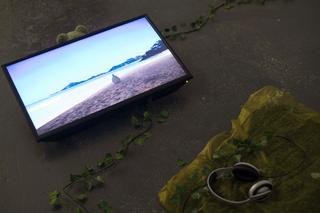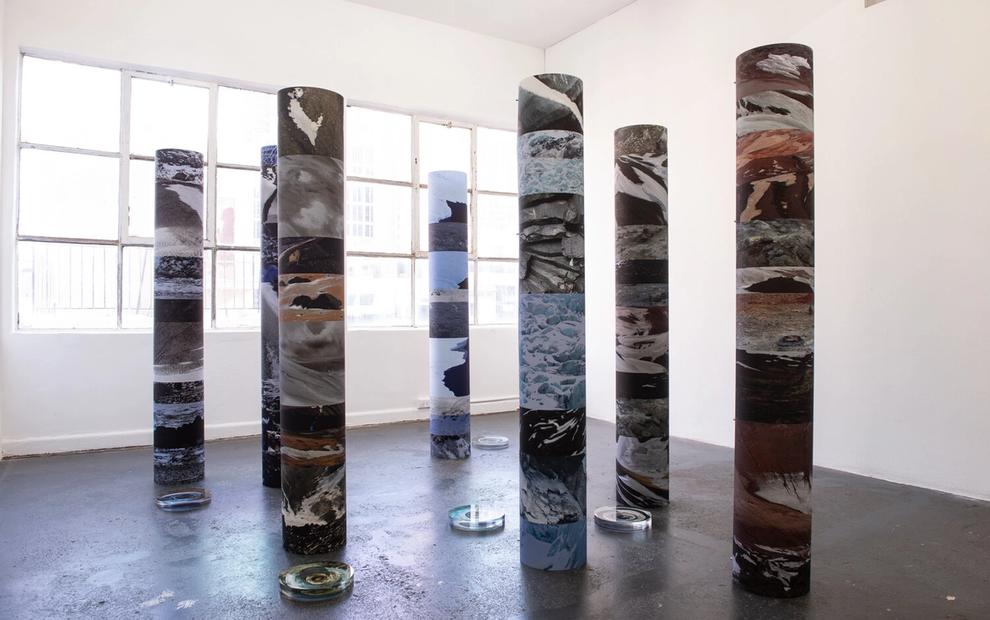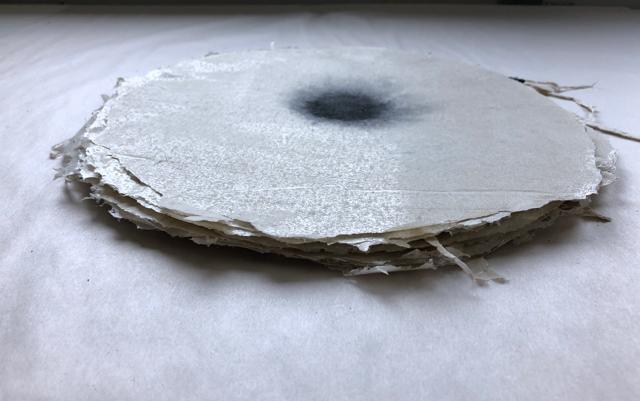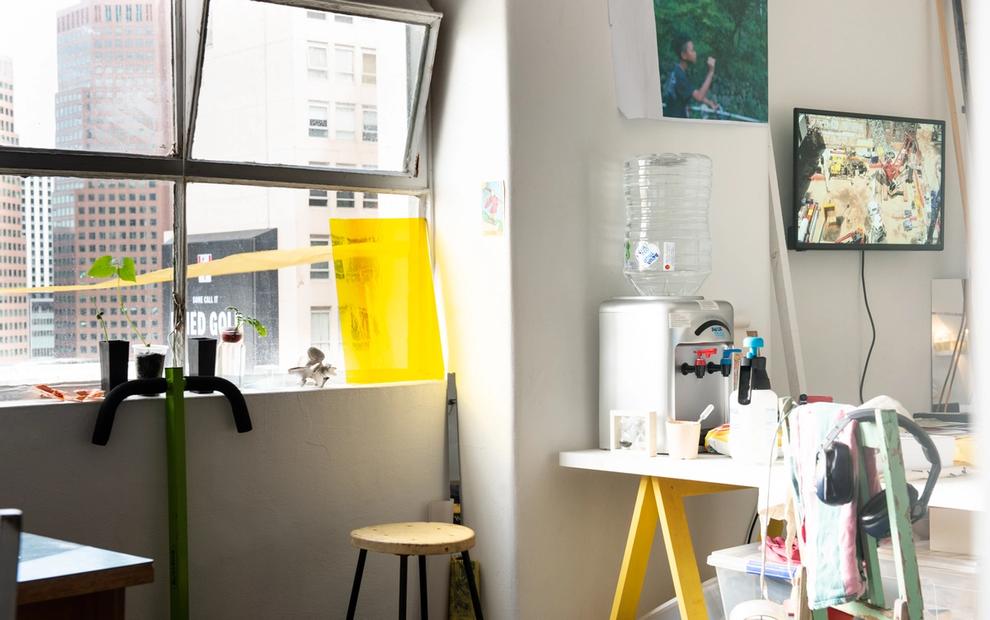

Digital Land(e)scape
Zuza Banasinska
13–30 Nov 2019
The exhibition was a set of tutorials, offering a critical ’didactic’ of approaching nature through digital interface. It operated through tensions between the idyllic representations of nature and its inherent artificiality. Through three projections of ’How to Meditate with Nature’, the viewer was immersed in the world of digital landscapes. Each video corresponded to a different space of meditation: home, outside, work. Yet all of them emphasised the non-specificity of the representations of nature, guiding the viewer towards a place that does not exist.
The videos were paired with "How to Grow a Tree", a drawing made by following the cursor in a YouTube tutorial on how to create a tree in a 3D graphics program. The visual chaos of the drawing was to contrast the idyllic landscapes of the videos, adding a certain tension to the „meditations".
’How to Meditate with Nature’ was a video referencing the availability of self improvement and quick fix meditations online, inspired by the visual style of software tutorials. Drawing on Taoist philosophy of unification of the body and mind, Zuza created an environment where the virtual and the real merged, where sensual experience and internal states were visualized by the objective representations of interface. The virtual world loses its virtuality (or the real one its realness), when we can't contrast them. In a time of ecological crisis, the interface becomes an illusion of control.
The other work is „How to Grow a Tree”, which was a drawing performance made by following the cursor in a YouTube tutorial on how to create a tree in a 3D graphics program. The movement of the human hand was here the creating, yet dominating force, exercising its power to conjure up a tree in only 20 minutes. Through the materialization of a virtual process, the purely physical aspect of constructing virtual reality, and, especially, virtual nature, was emphasized.
What remains when the mimetic quality of representation of nature is removed? Could the act of peeking through the surface of representation reveal anything about our relationship with nature?
The exhibition was supported by the Adam Mickiewicz Institute.












The exhibition was a set of tutorials, offering a critical ’didactic’ of approaching nature through digital interface. It operated through tensions between the idyllic representations of nature and its inherent artificiality. Through three projections of ’How to Meditate with Nature’, the viewer was immersed in the world of digital landscapes.
This program takes place on the land of the Wurundjeri people of the Kulin Nation. We recognise that sovereignty was never ceded - this land is stolen land. We pay respects to Wurundjeri Elders, past, present and emerging, to the Elders from other communities and to any other Aboriginal or Torres Strait Islanders who might encounter or participate in the program.
Zuza Banasinska is an artist from Warsaw, Poland who predominantly works in the medium of experimental film. She graduated from the Graphics department at the Academy of Fine Arts in Cracow, Poland. In 2017-2018 she also studied at the Universität der Künste in Berlinie, in the class of Hito Steyerl. In 2019, she studied at “Resolution”, a Moving Image Master at the Sandberg Instituut in Amsterdam. Received distinctions at such festivals as “Młode Wilki” in Szczecin, “File Festival” in Sao Paulo, “Transmission Festival” in Kassel/Karslruhe/Warsaw, “Nodocs” in Caracas and others. She participated in art residencies, such as “Heima” in Seyðisfjörður, Iceland or “Dům Umění Mesta Brna” in the Czech Republic. Her works have been shown in many galleries, project spaces and museums around the world.
Related

1–18 Jul 2020
Photographic Tunnelling
Emma Hamilton

9–26 Oct 2019
Chain of Ponds
Jude Roberts, Helen Hardess

13–30 Nov 2019
You Shares Me Shares..
Lizzy Simpson






